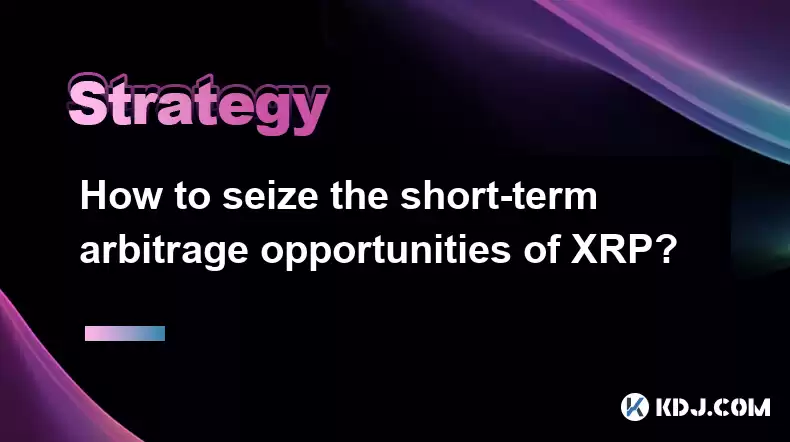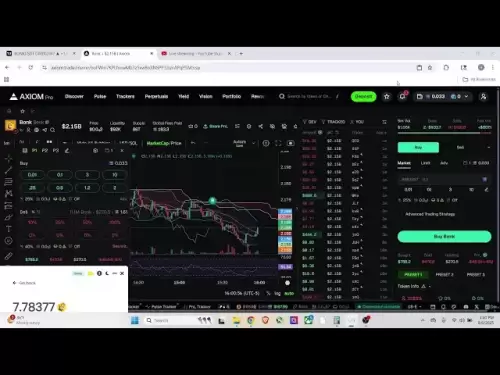-
 Bitcoin
Bitcoin $115100
1.27% -
 Ethereum
Ethereum $3675
2.71% -
 XRP
XRP $2.995
1.45% -
 Tether USDt
Tether USDt $1.000
0.02% -
 BNB
BNB $769.8
2.64% -
 Solana
Solana $168.0
3.25% -
 USDC
USDC $0.9999
-0.01% -
 TRON
TRON $0.3371
1.48% -
 Dogecoin
Dogecoin $0.2051
3.36% -
 Cardano
Cardano $0.7394
2.30% -
 Hyperliquid
Hyperliquid $38.15
0.42% -
 Stellar
Stellar $0.3966
-0.36% -
 Sui
Sui $3.486
2.93% -
 Chainlink
Chainlink $16.72
2.52% -
 Bitcoin Cash
Bitcoin Cash $568.0
4.36% -
 Hedera
Hedera $0.2440
2.59% -
 Ethena USDe
Ethena USDe $1.001
0.04% -
 Avalanche
Avalanche $22.16
2.06% -
 Litecoin
Litecoin $119.1
-0.73% -
 UNUS SED LEO
UNUS SED LEO $8.991
0.04% -
 Toncoin
Toncoin $3.232
-0.39% -
 Shiba Inu
Shiba Inu $0.00001233
2.82% -
 Uniswap
Uniswap $9.717
2.53% -
 Polkadot
Polkadot $3.664
1.85% -
 Dai
Dai $1.000
0.01% -
 Monero
Monero $281.2
-3.89% -
 Bitget Token
Bitget Token $4.350
1.55% -
 Cronos
Cronos $0.1428
5.07% -
 Pepe
Pepe $0.00001050
3.68% -
 Aave
Aave $262.3
3.54%
How to seize the short-term arbitrage opportunities of XRP?
XRP arbitrage involves buying low on one exchange and selling high on another; tools like arbitrage bots and real-time data from CoinMarketCap can help identify opportunities.
Apr 20, 2025 at 04:56 am

Introduction to XRP Arbitrage
XRP, known for its fast transaction speeds and low fees, presents numerous opportunities for traders looking to engage in short-term arbitrage. Arbitrage involves taking advantage of price differences in different markets to generate a profit. In the context of XRP, this means buying XRP on one exchange where it's priced lower and selling it on another where it's priced higher. This article will guide you through the process of identifying and seizing these opportunities effectively.
Understanding XRP Market Dynamics
To successfully engage in XRP arbitrage, it's crucial to understand the factors that influence XRP's price across different exchanges. Market liquidity, trading volume, and regulatory news can all cause price discrepancies. For instance, if there's a sudden surge in trading volume on one exchange due to a large buy order, the price of XRP might temporarily increase on that platform, creating an arbitrage opportunity. Keeping an eye on these dynamics can help you spot potential arbitrage opportunities.
Tools and Resources for XRP Arbitrage
To effectively seize short-term arbitrage opportunities, you'll need the right tools and resources. Arbitrage bots can automate the process of scanning multiple exchanges for price differences. Websites like CoinMarketCap and CoinGecko provide real-time price data across various exchanges, which can be invaluable for manual arbitrage. Additionally, using APIs from exchanges can help you integrate data into your own trading algorithms.
Steps to Identify and Execute XRP Arbitrage
Identifying and executing XRP arbitrage involves several steps:
- Monitor Exchange Prices: Use tools like CoinMarketCap to keep an eye on XRP prices across different exchanges. Look for significant price differences that could indicate an arbitrage opportunity.
- Assess Liquidity: Before executing a trade, check the liquidity on both the buying and selling exchanges. Low liquidity can make it difficult to execute large trades without affecting the market price.
- Calculate Potential Profit: Subtract the buying price and any transaction fees from the selling price to determine if the arbitrage opportunity is worth pursuing.
- Execute the Trade: If the potential profit justifies the risk, buy XRP on the lower-priced exchange and sell it on the higher-priced exchange as quickly as possible to capture the price difference.
- Monitor and Adjust: Keep an eye on the market conditions and be ready to adjust your strategy if the price difference narrows or if other factors change.
Risks and Considerations in XRP Arbitrage
While XRP arbitrage can be profitable, it's not without risks. Price volatility can quickly erase potential profits if the market moves against you. Additionally, transaction fees can eat into your margins, so it's important to factor these into your calculations. Regulatory changes can also impact the feasibility of arbitrage, as some exchanges may impose restrictions on certain trading activities. Always be aware of these risks and consider them when planning your arbitrage strategy.
Practical Example of XRP Arbitrage
Let's walk through a practical example of how to execute an XRP arbitrage trade:
- Identify the Opportunity: You notice that XRP is trading at $0.50 on Exchange A and $0.52 on Exchange B.
- Check Liquidity: You verify that both exchanges have sufficient liquidity to handle your intended trade volume.
- Calculate Profit: You plan to buy 1000 XRP on Exchange A for $500 and sell it on Exchange B for $520. After accounting for a 0.1% transaction fee on both exchanges, your total fees would be $1 (0.5% of $500 + 0.5% of $520). Your net profit would be $19 ($520 - $500 - $1).
- Execute the Trade: You buy 1000 XRP on Exchange A and immediately sell it on Exchange B, capturing the $19 profit.
- Monitor and Adjust: You continue to monitor the market to see if the price difference persists, allowing for further arbitrage opportunities.
Frequently Asked Questions
Q: Can I use leverage to increase my arbitrage profits with XRP?
A: While leverage can amplify profits, it also increases risk. Using leverage in arbitrage can lead to significant losses if the market moves against you. It's important to carefully consider the risks before using leverage in your arbitrage strategy.
Q: How quickly do I need to act on an XRP arbitrage opportunity?
A: Speed is crucial in arbitrage. Price differences can disappear quickly, so you need to act as soon as you identify an opportunity. Using automated tools can help you execute trades faster than manual trading.
Q: Are there any legal considerations I should be aware of when engaging in XRP arbitrage?
A: Yes, legal considerations can vary by jurisdiction. Some countries have specific regulations regarding cryptocurrency trading and arbitrage. It's important to research and comply with the laws in your area to avoid legal issues.
Q: Can I engage in XRP arbitrage with small amounts of capital?
A: Yes, you can engage in XRP arbitrage with small amounts of capital. However, the potential profits will be smaller, and transaction fees may have a larger impact on your overall returns. It's important to calculate the feasibility of small-scale arbitrage carefully.
Disclaimer:info@kdj.com
The information provided is not trading advice. kdj.com does not assume any responsibility for any investments made based on the information provided in this article. Cryptocurrencies are highly volatile and it is highly recommended that you invest with caution after thorough research!
If you believe that the content used on this website infringes your copyright, please contact us immediately (info@kdj.com) and we will delete it promptly.
- HashFlare Founders Face the Music: Jail Time Looms?
- 2025-08-07 14:30:12
- Pepeto's Pounce: Meme Coin Mania Meets Blockchain Infrastructure
- 2025-08-07 15:10:12
- Parataxis, SPAC Merger, and Bitcoin Treasury: A New York Minute on Crypto's Latest Moves
- 2025-08-07 15:30:12
- Toshi on Binance.US: A Memecoin's Big Break
- 2025-08-07 14:30:12
- Bitcoin, SPAC Mergers, and Parataxis: A New Yorker's Take on Crypto's Wall Street Moment
- 2025-08-07 14:50:27
- Bitcoin, Collateral, and Loan Strategies: A New York Minute on the Future of Finance
- 2025-08-07 14:50:27
Related knowledge

How to avoid common crypto investment mistakes?
Jul 13,2025 at 01:35am
Understanding the Risks of Crypto InvestmentInvesting in cryptocurrency can be highly rewarding, but it also comes with significant risks. One of the ...

What is a long-short crypto strategy?
Jul 15,2025 at 10:56am
Understanding the Basics of a Long-Short Crypto StrategyA long-short crypto strategy is an investment approach where traders simultaneously take long ...

What is a long-short crypto strategy?
Jul 11,2025 at 01:28pm
Understanding the Basics of Long-Short Crypto StrategyA long-short crypto strategy is an investment approach where traders take both long and short po...

How to use the RSI indicator for crypto?
Jul 12,2025 at 03:56pm
Understanding the RSI Indicator in Cryptocurrency TradingThe Relative Strength Index (RSI) is a momentum oscillator used to measure the speed and chan...

Is copy trading a good strategy for crypto beginners?
Jul 12,2025 at 08:28am
Understanding Copy Trading in the Cryptocurrency MarketCopy trading is a strategy where novice traders replicate the trades of experienced investors a...

How to build a crypto portfolio with $1000?
Jul 13,2025 at 08:14pm
Understanding the Basics of Cryptocurrency InvestmentBuilding a crypto portfolio with $1000 starts with understanding the fundamentals of cryptocurren...

How to avoid common crypto investment mistakes?
Jul 13,2025 at 01:35am
Understanding the Risks of Crypto InvestmentInvesting in cryptocurrency can be highly rewarding, but it also comes with significant risks. One of the ...

What is a long-short crypto strategy?
Jul 15,2025 at 10:56am
Understanding the Basics of a Long-Short Crypto StrategyA long-short crypto strategy is an investment approach where traders simultaneously take long ...

What is a long-short crypto strategy?
Jul 11,2025 at 01:28pm
Understanding the Basics of Long-Short Crypto StrategyA long-short crypto strategy is an investment approach where traders take both long and short po...

How to use the RSI indicator for crypto?
Jul 12,2025 at 03:56pm
Understanding the RSI Indicator in Cryptocurrency TradingThe Relative Strength Index (RSI) is a momentum oscillator used to measure the speed and chan...

Is copy trading a good strategy for crypto beginners?
Jul 12,2025 at 08:28am
Understanding Copy Trading in the Cryptocurrency MarketCopy trading is a strategy where novice traders replicate the trades of experienced investors a...

How to build a crypto portfolio with $1000?
Jul 13,2025 at 08:14pm
Understanding the Basics of Cryptocurrency InvestmentBuilding a crypto portfolio with $1000 starts with understanding the fundamentals of cryptocurren...
See all articles

























































































